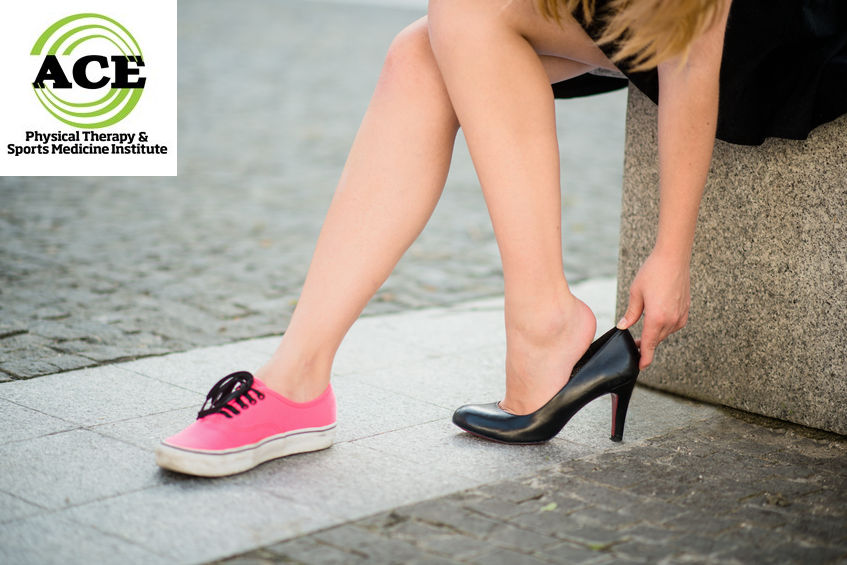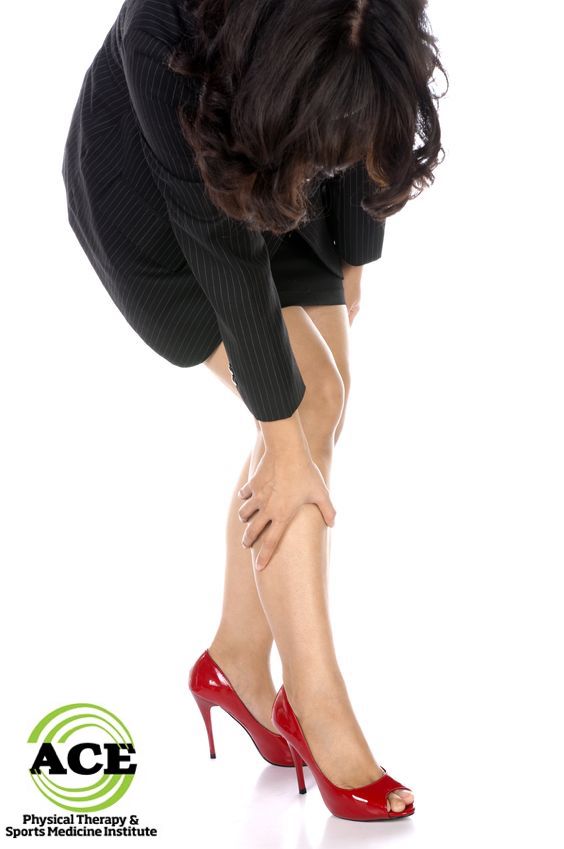CAN YOUR SHOES CAUSE KNEE PAIN?

Tid Bits of Info
- The average width of a “high heel” is 2.5 inches wide and the average woman’s forefoot width is 3 inches.
- Properly fitted shoes with no heel have been shown to reduce knee pain if someone suffers from osteoarthritis.
- “High heels” force the center of gravity forward, anterior tilt of the pelvis and many times flexed knees due to a feeling of instability during gait.
- Running shoes should be replaced every 250-300 miles.
- If you have arthritic knees, seek the advice and treatment of a Physical Therapist.
Every day people asks their physical therapist if shoes may be causing back pains, knee pains, or pains in other parts of the body. Simply put, yes. The reason shoes can impact various parts of the body may not be quite so obvious. Health condition, types of shoes, the type of activities, and other factors can all play a role in the relationship of shoes to the body.
Properly fitting shoes have been shown in clinical studies to reduce pain in people who suffer from osteoarthritis in their knee joints. Conversely, ill-fitting shoes can make the symptoms worse. Properly fitting shoes can aid in force distribution, ankle/foot stability and cushion the impact force upon ground contact during all forms of gait.
All shoes can have an impact on the knee joint. High heels are the worst offenders of this problem. Unfortunately, most people think that “high heels” means “stiletto pump,” but most shoes have some form of raised heel without a matching lift on the mid and forefoot.
The “standard” running shoe can have a raised heel that is higher than one inch. The elevated heel shifts the person’s center of gravity and places more force on the knee joint. The entire knee is adversely effected with any heel and the higher the heel the more adverse the effect. When a heel is greater than two inches it can create an anterior pelvic tilt and force someone to walk with slightly flexed knee joints due to feeling unsteady. The toe box of a “high heel” dress shoe is narrow and further limits the stability of the person’s foot/ankle. All of this can increase the load on the knee by more than 15% leading to more knee pain in someone that has an arthritic knee. Walking with a slightly flexed knee can lead to excess pressure on the patella femoral joint and cause anterior knee pain.
Unloading the knee joint of some of the pressure is the key to controlling pain. Some people will benefit from different types of shoes and inserts in the shoe. Healthcare professionals have had success at reducing knee pain in people with arthritic knees by placing a “wedge” shape device under the heel inside the shoe. This wedge can reduce the compressive force in the knee and when placed in the shoe can create a “gap” on the medial or lateral knee joint compartment. Obviously increasing the space between the articular surfaces that are arthritic can reduce the compressive force and “contact” forces, which in turn decreases the pain in the affected knee.

Studies have indicated that wearing a flexible, flat shoe can reduce the load and forces that act on the knee joints. When patients are being assessed for proper shoe wear, they should consider using this type of shoe if they have an arthritic knee joints because it can reduce the pain level significantly.
Using the proper shoes for an activity is only a part of the solution to controlling the pain that occurs when someone suffers from arthritis in the knee joint. They should participate in a thorough exercise routine that can be designed by a Physical Therapist. This routine should include exercises that are designed to develop strength, flexibility and muscular and cardiovascular endurance. The arthritic knee joint tends to be less flexible, strong and lacks neuromuscular control compared to a non-arthritic joint.
Wearing the proper shoes for an event can reduce the pain level of someone who suffers from arthritic knee joint. Wearing a shoe that has a differentiation in height between the heel and the forefoot of size with the heel being higher can lead to more pain in the involved knee.
























